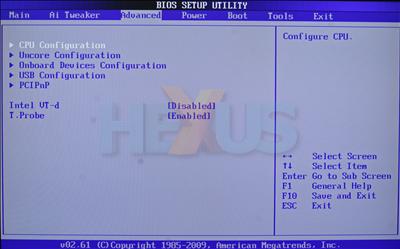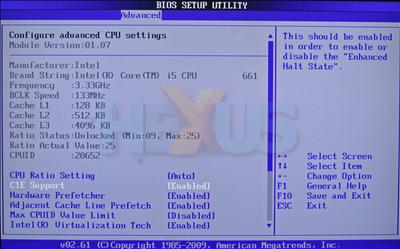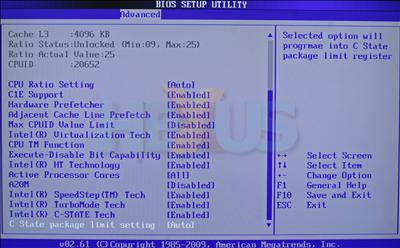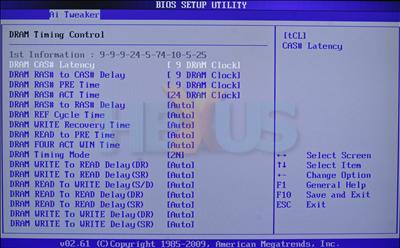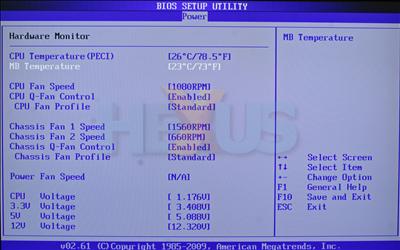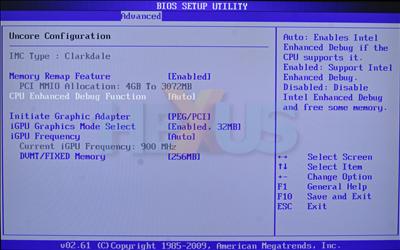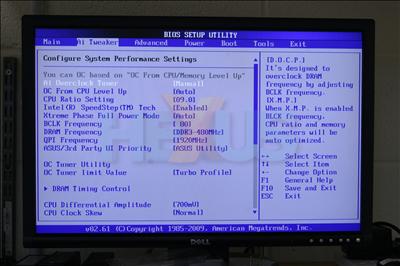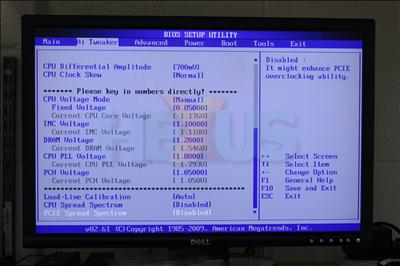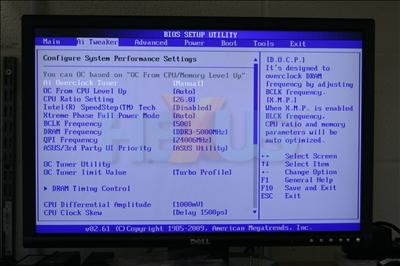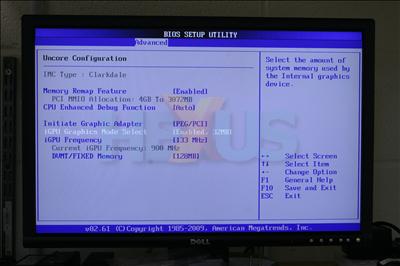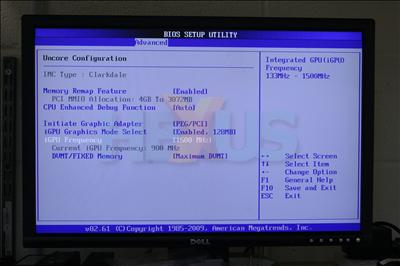BIOS
In addition to allowing access to some of the more useful sections of
the BIOS, the advanced section allows you to
enable/disable the T.Probe feature. If you believe ASUS's hype
surrounding this feature, it's unclear quite why you would want to disable it at all.
Interestingly, and despite our test CPU not offering this
functionality, ASUS still seemingly allows you to enable the
Virtualisation for Directed I/O (VT-d) feature.
Even though the Core i5 661 CPU does without some of the business oriented
features, there's still a plethora of features you can enable/disable.
Not the most comprehensive set of memory timing adjustments possible,
but still more than adequate considering the target market of the board.
The hardware monitor section of the BIOS contains little more
than the bare minimum of voltages and temperatures. We feel that the
monitoring of PCH, IMC, and DRAM voltages should also be displayed,
especially when it's clear the board is capable of doing so, as they're
displayed within the AI Tweaker section of the BIOS.
Considering the T.Probe functionality, which is good, it's odd that the VRM
temperatures for each phase aren't displayed.
Unlike on LGA 1366 boards, it's not possible to adjust or even display
the UNCORE multiplier/frequency.
Instead the most useful options in this section are reserved
for configuring the on-chip graphics (if applicable).
Maximum
and minimum
The minimum and maximum frequencies/voltages are illustrated below as
three pairs (click the images for a larger view).
All of the essential frequency adjustments (with the exception of the
IGP) are available from this page.
Although not shown (as the AI Overclock Tuner is set to Manual), this page also accesses both the X.M.P. and built-in ASUS memory overclocking profiles.
Only three memory ratios are selectable with our Core i5 661 CPU.
The lowest is 6x, which with the lowest BCLK setting of 80MHz as shown
above, equates to an effective memory clock of 480MHz.
Most of the required voltage adjustments are available but only the CPU
and DRAM voltages can be reduced below normal.
The fact that the DRAM voltage can be dropped down to 1.2V makes it
ideal to use with most of the green/low-voltage DIMMs now available on
the market.
It's always amusing to see the amount of adjustment some manufacturers build
into the overclocking section of the BIOS.
A BCLK of 500MHz, effective memory clock of 5GHz, and effective QPI
clock of 24GHz are all out of reach for even the world’s
top
overclockers.
Still, at a much lower BCLK, the maximum memory ratio of 10x (12x when
using a Core i7 860 or 870 CPU) should just about enable it to run
DDR3 at 2,133MHz.
In addition the maximum QPI multiplier of 48x, when coupled with a much lower BCLK, should enable you to explore the QPI frequency limits of your CPU.
The maximum CPU ratio of 26x, like the maximum memory and QPI ratio,
is also restricted by
the CPU's capabilities.
Like the frequency adjustments above, it's unlikely you'll be able to
exploit the full range of adjustments. In most cases it would be unwise
to attempt to do so, hence why ASUS helpfully highlight the voltages in
red once they reach a dangerous level.
The DRAM voltage by default can only be selected up to 2.0V unless the
OV_DRAM jumper is set appropriately.
The P7H57D-V EVO also supports GPU Boost for under/overclocking the IGP of Clarkdale CPUs.
A wide adjustment range from just 133MHz all the way up to 1,500MHz is available. In addition, the two different memory shares allocated to the IGP can be adjusted in size.






